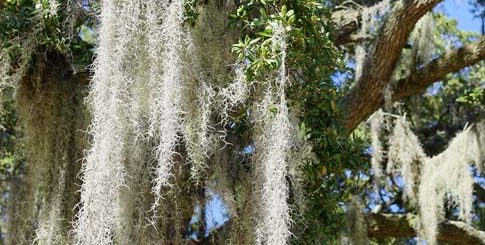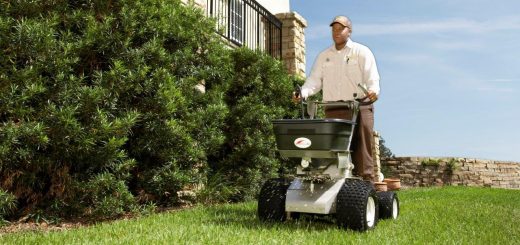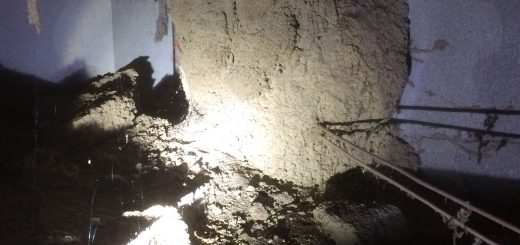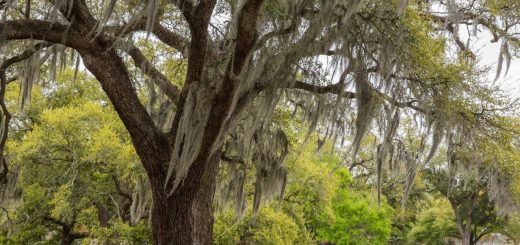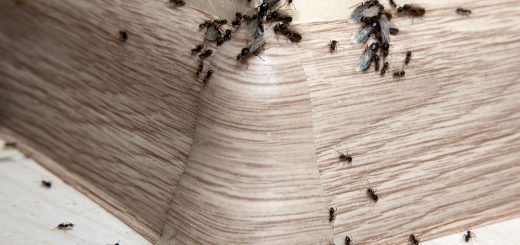Spanish Moss Origins and Lore
Spanish Moss is very common throughout the forests and swamps in the South Eastern United States. There has been great debate over whether or not the moss is friend or foe a guest or pest? I have done some digging and found two different tales about the beginnings and origins of Spanish Moss.
Folklore passed down from generation to generation gives Spanish Moss a birth date of about the early 1700’s. The story goes; there once was a traveler and his Spanish bride-to-be who decided the south was where their new home would be. However, the Cherokee who claimed that land theirs’ were not very happy about this choice indeed.
The traveler and his bride-to-be stuck their ground and built a home despite the Cherokee. One day as the now married couple strolled along their property the Cherokee arrived and took the Spanish bride and cut off all her hair, then threw it up in a tree. The Cherokee Chief began a chant and vowed a curse on the couple and their property.
Days later the couple began to see the hair had changed its color from black to a streaky grayish-green. As the days kept passing, the hair began to grow and spread, as if it was jumping from tree to tree. Over the years, the hair spread all across the south, leaping from tree to tree defending itself as if to be a large army. Eventually someone gave it the name of moss and because of this folklore, it is now called Spanish Moss.
Spanish Moss has even crossed an ocean and is now part of the Hawaiian vegetation. The moss was introduced to the Hawaiian Islands in the 19th century and became a popular ornamental and lei plant used in many different ways. In Hawaii, the moss is known as Umi-umi-o-dole, named after Governor Sanford B. Dole’s beard. Recently it has also been referred to as “Pele’s hair”. To which Pele is the name of the Hawaiian goddess.
Either way, some refer to this plant as a curse and others say blessed by a goddess. Moss has accomplished its goal of blanketing the grand old Live Oak Trees throughout the south as well as serving an almost spiritual likeness in the Pacific. While admired by some for trees and vegetation moss is a pest covering, suffocating and damaging the southern landscape.
